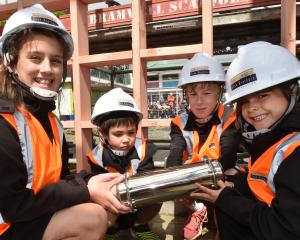
The 85-metre, 1900-tonne ship was one of seven built for the navy under the $500 million Project Protector programme. The navy also got a sister ship to Otago, four inshore patrol craft and the multi-role ship, HMNZS Canterbury.
Otago, commanded by Lieutenant Commander Simon Rooke, is due in Dunedin next Thursday for five days of ceremony and welcome.
The navy said the ship would be open to the public and the ship's company would march through the streets of Dunedin in a charter parade. The navy band was also in Otago for performances in Dunedin, Balclutha, and Gore.
Chief of Navy Rear Admiral Tony Parr was to attend the charter parade on July 24 when the ship's company would be presented the charter to the city, giving officers and crew freedom to march through the city of Dunedin with swords drawn, bayonets fixed, colours flying, band playing and drums beating.
The ship's motto -- He Kaitiaki no nga tai ki te tonga - means southern guardian.
Otago was the first of the two offshore patrol vessels to be accepted by the navy in February.
Otago and her sister ship, HMNZS Wellington were designed for patrol and surveillance operations around New Zealand's 200 mile exclusive economic zone, south into the Southern Ocean and north into the Pacific.
The navy said they could also be tasked for search and rescue, humanitarian assistance, disaster relief, support to peacekeeping operations and navy sea training.
Both ships could land a Seasprite helicopter and carried rigid hull inflatable boats.
The ships were not designed as ice-breakers or to enter Antarctic ice-packs but had the range and capability to do patrols in the ice fields of the Southern Ocean.
The ships had a crew of 35, and could also carry 10 flight crew to operate a helicopter and 34 other personnel.
They had a range of 6000 nautical miles, a top speed of 22 knots and carried a 25mm Bushmaster naval gun and two .50 calibre machine guns
The Otago's introduction into the navy was not without its woes.
It arrived in April a fortnight late from Australia because of engine trouble and two years after the deadline the navy had set the shipbuilders in Melbourne.
It was originally due in New Zealand in the middle of 2008 but a range of issues delayed the final acceptances of the ship by the navy.
As it left Melbourne on its delivery voyage to New Zealand in April faults in both engines forced it to limp back into port on one engine for repairs.












